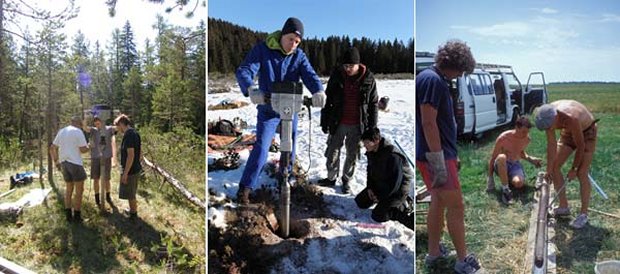Palynology: Research equipment
Palynology: Current research | Reference collections | Links | Long-term environmental changes

We use Livingstone coring equipment (STITZ, modification after Streif) with Makita electric hammer attached to portable generator and board for extraction of sedimentary core. The diameter of coring tube is 8.6 cm. This equipment is suitable for coring soft, marsh or lake sediment, to ca. 8-10 m depth.

Pollen cores and samples from archaeological sites are stored in dark at +4°C.

Pollen samples are prepared in palynological laboratory, where sediment is processed by using chemicals to remove organic and inorganic material and to concentrate pollen. Since dangerous chemicals are used, it is essential to have very good ventilation system. The air that comes to laboratory needs to be filtered to avoid the contamination with modern pollen, which is abundant especially in the spring and summer months.


Nikon Eclipse E400. Pollen counting is the longest and most tiresome part of palynological research. Pollen slides are examined under light microscope at 400x magnification: we move across the slide in vertical or horizontal directions without crossing the same vision field twice and count all pollen grains that we see. In each sample at least 300 pollen grains need to be counted.